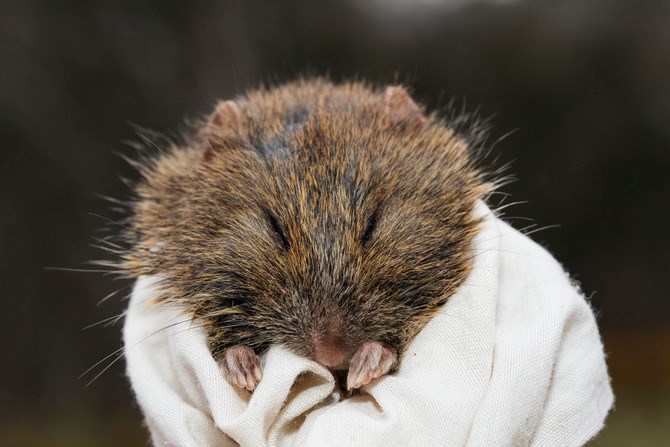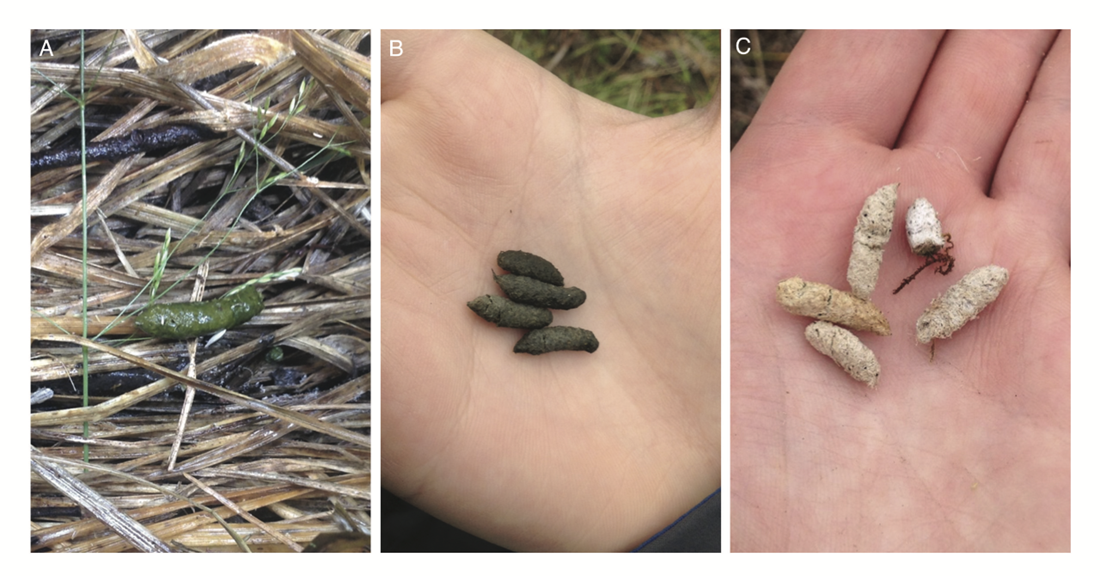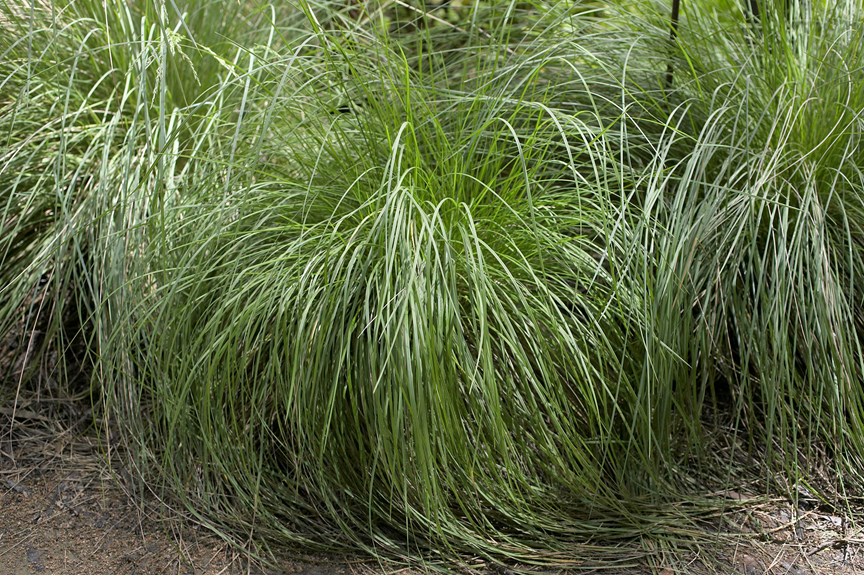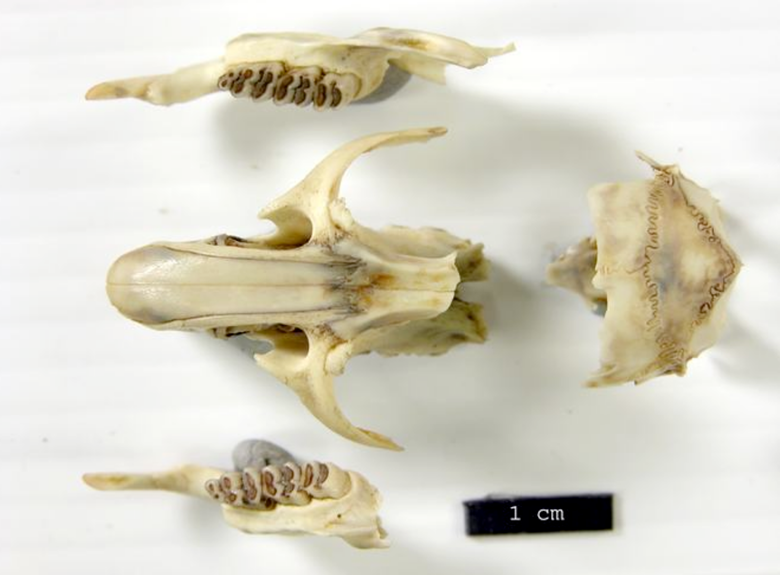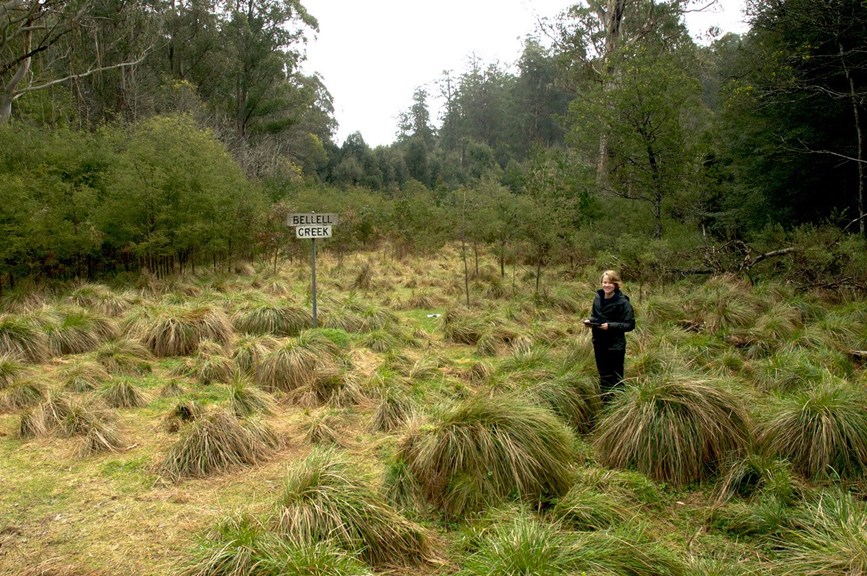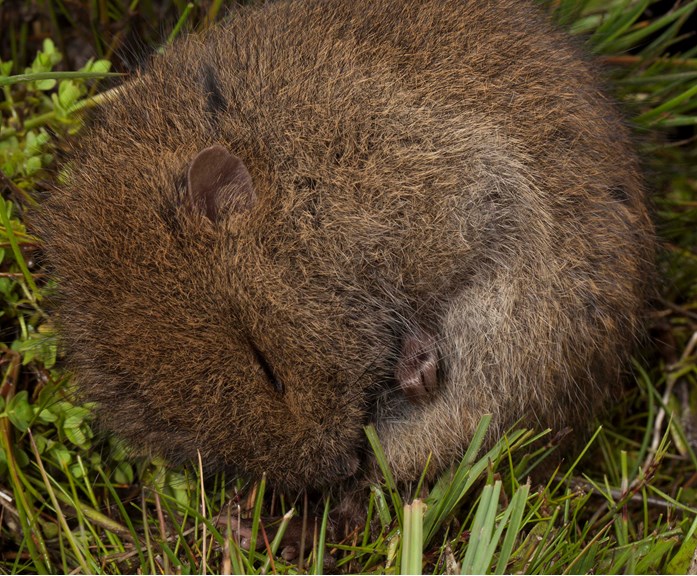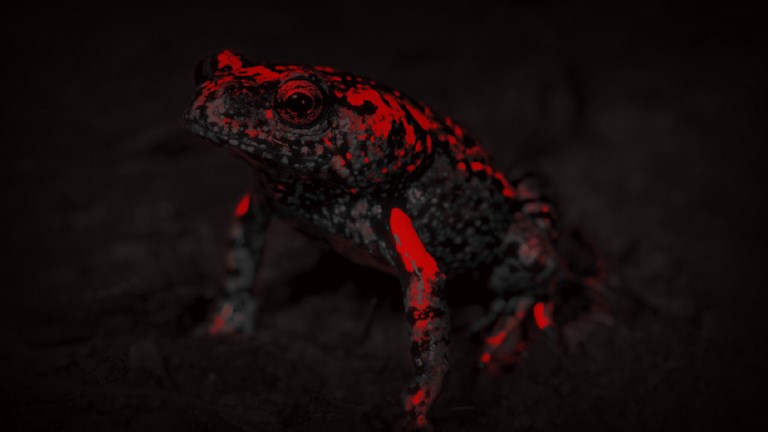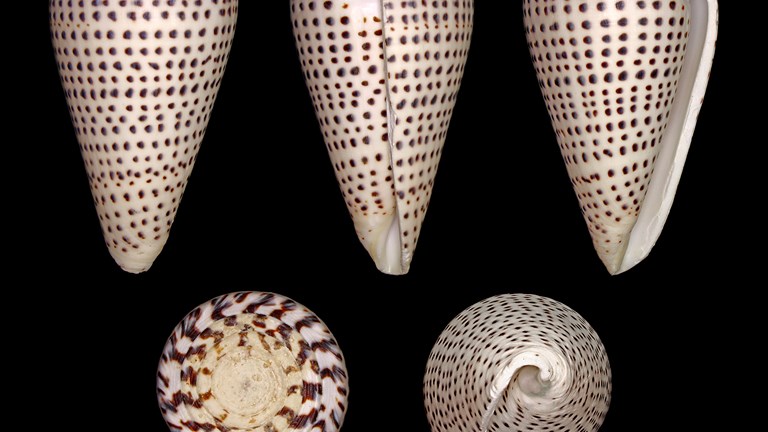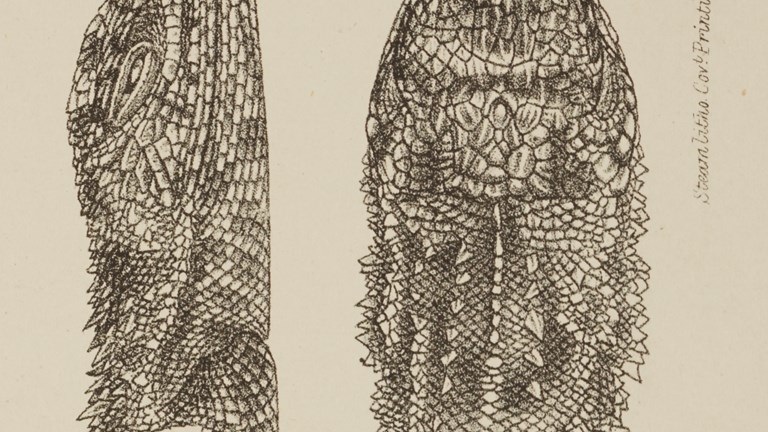Nowhere to hide?
Climate change is pushing the Tooarrana into the High Country. That sanctuary just went up in flames. But there is hope.
In the midst of a global pandemic, two Museums Victoria scientists are scouring the High Country for poo. But not just any poo.
This poo, or scat, is so vividly green its origin is unmistakable. It is the calling card of a species endangered in Victoria.
A mammal that is such a prolific little pooer, it can pump out up to 400 scat pellets a day.
Scientists like senior curator of mammals Dr Kevin Rowe call the species Mastacomys fuscus.
Kevin describes it as cute and fuzzy, with a puppy-like face and wonderful, gentle demeanor.
To First Australians, it was the Tooarrana. In common parlance, it’s a rat. Specifically, the Broad-toothed Rat.
The Tooarrana's abundant and distinctive scat make this the most effective means of finding the rat. If, indeed, it remains to be found.
But with winter poised to grip the mountains of north-eastern Victoria that it calls home, the window in which to do so is fast closing.
Yet there are three factors which make this a most pressing hunt.
A catastrophic bushfire season, climate change and the survival of a species.
Kevin comes from California.
From koalas to wallaroos, he had a continent full of charismatic mammals to research. He chose rodents.
‘I often get this kinda quizzical question: “you’re studying rats, why don’t you just come to my house?”’Dr Kevin Rowe
The rodents of Australia are diverse and storied.
Rats are the only non-flying, placental mammals to have naturally colonised Australia—excluding humans.
The first rodents are thought to have arrived from New Guinea to Australia about 4 million years ago.
That single, pioneering species would conquer a continent of marsupials, in which bats were the only placental inhabitants.
Emerging from tropical rainforest, its descendants hopped across vast deserts, scaled mountains and swam rivers. In doing so, they became an essential member of almost every ecosystem in Australia.
In turn, they would be moulded by those habitats. Some developed powerful hind legs for hopping, others prehensile tails for climbing or webbed feet with which to swim.
The Broad-toothed Rat carved out its own niche in the wet meadows of south-eastern Australia.
It eats grass and sedge—hence the bright green poo.
In doing so, it would come to resemble its better known, distant cousins of the Northern Hemisphere: lemmings and voles.
Like those Arctic grass eaters, the Broad-toothed Rat evolved wide molars with which to grind grass, and large intestines to break it down.
It became squat round and grew a big belly.
But this relationship between grass and rodent would not only mould the species.
It would also put it on the frontline of a climate crisis.
Broad-toothed Rats thrive in high altitudes. The reason, again, is grass.
The tussocky poas the Broad-toothed Rats love flourish in cool, wet conditions found largely in alpine and sub-alpine areas.
As Australia has warmed—by about 1°C since 1910—and droughts have become more frequent, the poa grasslands have retreated to higher elevations.
And when poa grasslands disappear, so too the Broad-toothed Rat.
Or at least, that would be a reasonable assumption—and one backed up by the fossil record.
But in order to test a hypothesis like that, scientifically, two things are required.
First, a scientist needs to know where a species used to be. Then they need to check to see if it is still there.
Which all sounds very simple, but of course, rarely is.
In the middle of the last decade, Kevin, his wife and fellow Museums Victoria scientist Karen and masters student Stella Shipway set out to do just that.
Years of research, fieldwork and analysis culminated last month when their findings were published in the CSIRO's Wildlife Research journal.
The trio established 68 places in Victoria in which the Broad-toothed Rat was recorded up until 1990.
Then, in the winter of 2014/15, they scoured those sites. The findings were sobering.
Less than half the historical sites were still home to Broad-toothed Rats. And, yes, in general, they were higher and cooler locations.
And that was before disaster struck.
Australia’s catastrophic bushfire season of 2019/2020 was its worst on record.
‘The fires burnt through one of the strongholds for the Broad-toothed Rat: the High Country of Victoria,’ Kevin says.
‘This is where we expect their populations to be healthy and where they are supposed to retract under climate models as it gets warmer.
‘This is their island of safety.’
It may seem a paradox, but that natural disaster may also bring some benefits to those Broad-toothed Rats which survived. As well as fresh perils.
By reducing shrub and tree cover and promoting grass, those catastrophic fires will have created the kind of habitat Broad-toothed Rat loves.
On the other hand, that open country will have made the rats more vulnerable to foxes and feral cats.
The story of the Tooarrana is complicated, our understanding of it cursory, its future bleak.
We do know that pressures it faces will ratchet up. Temperatures will continue to rise and rainfall fluctuate. There will be more frequent and intense fires.
Kevin, for one, does not believe the Broad-toothed Rat a lost cause.
But if we are to ameliorate those pressures, he says, we will need to better know exactly what kind of impacts they will have on this fuzzy, little rat.
We will need more answers to some of the many open questions.
‘I’m for understanding,’ Kevin says.
Which is why he is scouring the High Country for poo.
